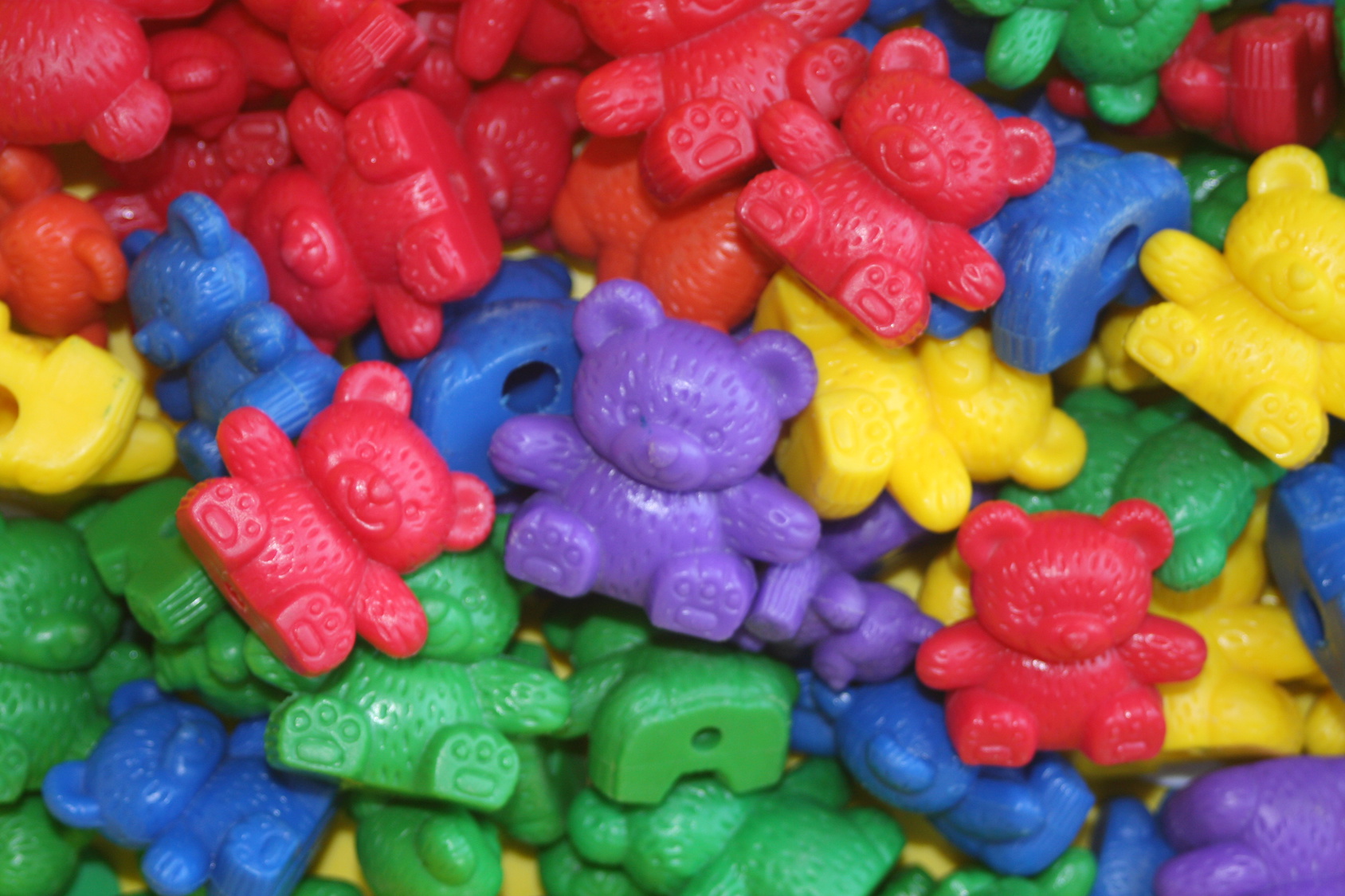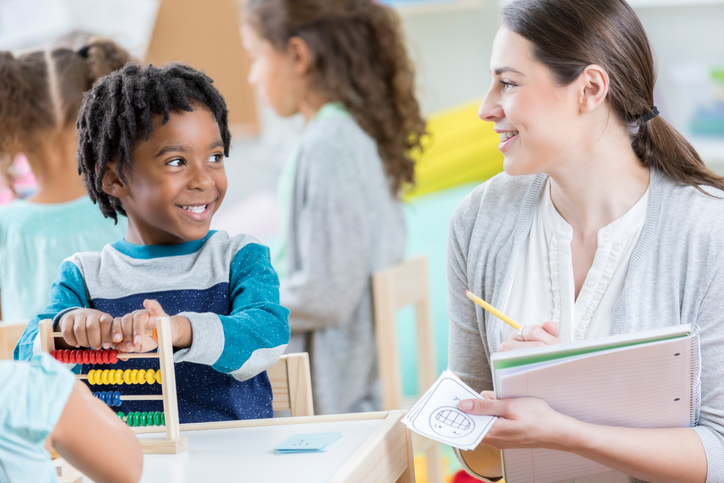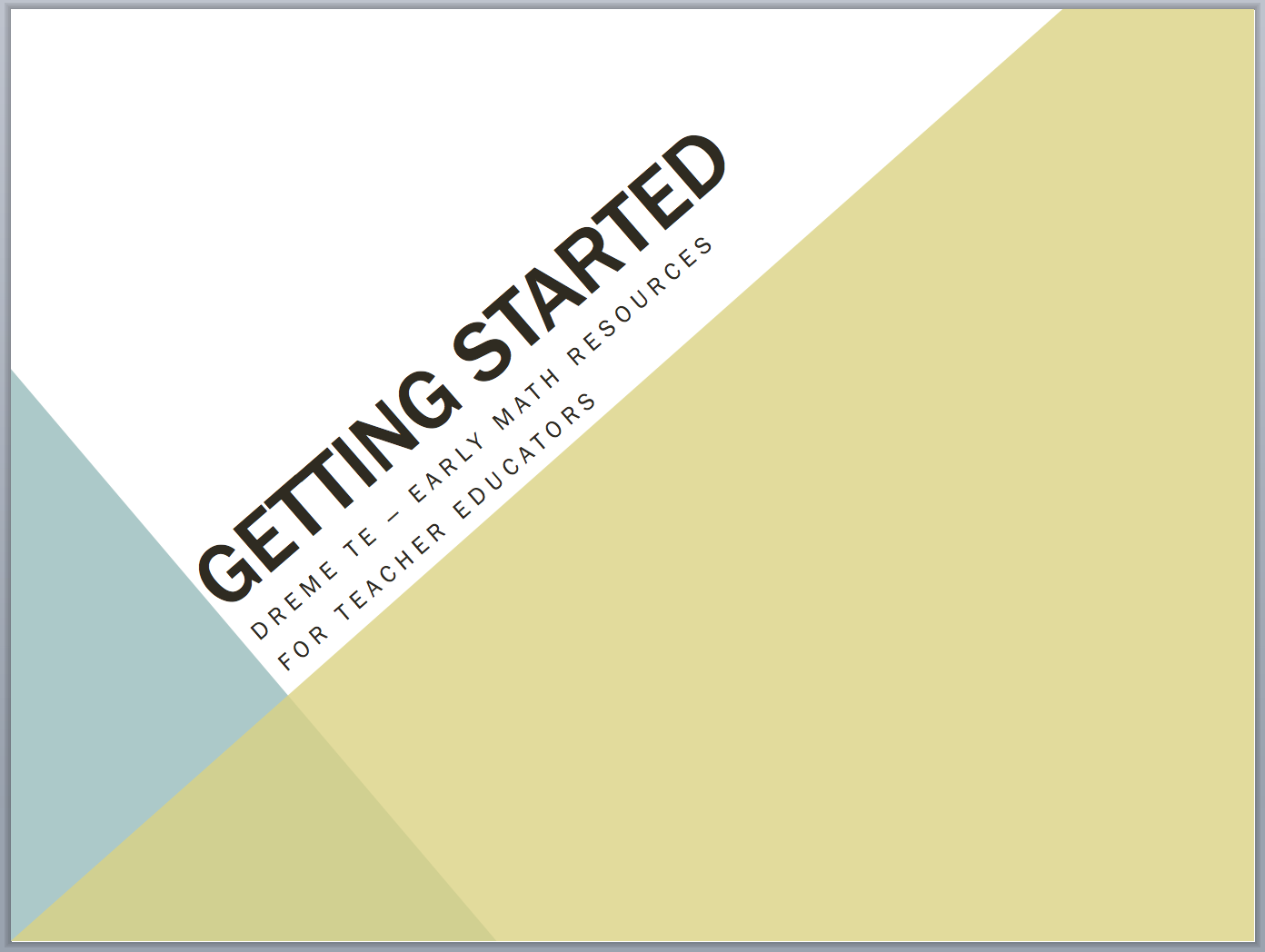A brief account of formative assessment approaches that can help you identify what young children know about patterns.
Assessing Patterns: How do we know?
A variety of formative assessment techniques are described in Overview of Formative Assessments. This handout describes ways of assessing children’s knowledge specifically about patterns. Fortunately, patterns exist across the field of mathematics and in a variety of contexts, providing us with frequent opportunities to examine children’s thinking about patterns. But what do we want to know about children’s understanding of patterns?
 We want to know if a child can
We want to know if a child can
- notice regularity
- recognize patterns
- identify patterns
- copy patterns
- extend patterns
- generalize patterns
(See Thinking Outside the ABAB Box handout for examples of these.)
As in all activities, it is important to make the assessment activities meaningful and engaging. Below you will find tips on assessing young children’s patterning knowledge. Use these tips in conjunction with Overview of Formative Assessments to learn assessment techniques as well as patterning development in children. This will set you well on your way to effectively monitoring your children’s development in understanding patterns. As in any assessment, discovering what children know and understand takes more than just observation. In all of the activities, think about questions that can reveal children’s thinking. Here is a list of just some of the questions that can help children express their understanding of pattern:
- What do you see?
- How are these different?
- How are these the same?
- What goes next?
- Is this a pattern?
- How do you know it is a pattern?
- Can you describe the pattern to me?
- Can you make this pattern with different colors?
- Can you make this pattern with different objects?
- Can you tell me what you are doing?
The following assessments can be done in a variety of settings and formats. Some require one-on-one interactions, some can be done in interaction with a group of children, and some through observations of children working alone or with peers. Make sure the assessment technique you choose is appropriate for assessing the targeted skill/ability/understanding. See Overview of Formative Assessments for more information on keeping track of children’s progress.
Formative Assessments
Noticing regularity (and irregularity!)
-
 Pattern skills build on children’s ability to discern differences. Ask children to sort a set of objects that can be sorted into distinct groups (colors, size, animal vs. insect, etc). Ask children: How did they sort them? What makes the objects the same? What makes them different?
Pattern skills build on children’s ability to discern differences. Ask children to sort a set of objects that can be sorted into distinct groups (colors, size, animal vs. insect, etc). Ask children: How did they sort them? What makes the objects the same? What makes them different? -
Children notice patterns all around them but may not be able to articulate what the pattern is ("Look Teacher! The recycle sign. That’s a pattern too!"). Ask questions that elicit children’s thinking ("Can you tell me what you see?").
Pattern recognition
-
In a group, ask children to look around the classroom and point out patterns. Remind them that the pattern unit has to repeat at least twice. Examples are stripes on someone’s shirt, pants or dress; or the repeating figures 0-9 in the “ones’ place” column on a hundreds chart. Ask questions to bring out children’s thinking ("Can you describe the pattern?")
-
Play I-Spy in small or large groups using patterns outside or inside the classroom ("I see a pattern with red–blue–red–blue."). Once the children understand the game, allow them to take the teacher role.
Pattern identification
-
Ask a one or more children to create their own patterns with beads, blocks, or other manipulatives. Ask another child to identify the pattern unit. This can be transformed into a center activity using collections of objects (teddy bears to put in lines, unifix cubes to connect, etc.).
-
Create sound or movement patterns (remember to repeat the unit!) and ask the children to identify the pattern.
Pattern copying
-
It is particularly important for pattern copying to be engaging (just recreating a pattern out of beads just isn’t that exciting!). Ask a child in a small or large group to create a sound pattern (with their mouths or musical instruments) or a movement pattern. Have them repeat the pattern unit twice to help them remember that pattern must repeat in order to know that it is a pattern. Then have one or more of the rest of the children describe and copy the pattern.
-
Create a game out of copying increasingly sophisticated or longer patterns with a small group of children (helps to build excitement and suspense). Create a simple pattern in the middle of the table with bears, blocks, shapes, etc. and ask the children to copy it. Once the children are able to copy that pattern, encourage and challenge them ("Awesome! Are you ready for a little bit harder pattern?"). By slowly increasing the difficulty of the problem, you are providing scaffolding for more sophisticated pattern copying. Children are highly motivated by challenge (and bored by tasks that do not involve any challenge), as long as the challenge is not too far out of reach. The task should require some thinking, and maybe even result in a few mistakes on the way, but not be so difficult that children have no idea how to do it.
Pattern extension
-
Begin a stack of blocks with two pattern units (e.g., square block–cylinder–square block–cylinder) and ask a child or small group to continue the pattern by stacking more blocks on top. Ask questions about what comes next. Having to balance the blocks can provide engagement for the children and it targets fine motor skills, too.
-
Start a pattern with objects found outdoors (such as different leaves, pinecones, dandelion flowers, or rocks). Make the pattern repeat, and then ask children to make it as long as they can.
-
Ask children to create a pattern using blocks or outdoor objects, or in different settings. Other children can extend the pattern. Even if the pattern is not accurately extended, these activities can provide rich conversations on what makes a pattern (and what doesn’t!).
Pattern generalization
-
Create your own activities based on the ones described above. Encourage the children to engage with objects, sounds, or movements other than those presented ("Joseph, I made a pattern with black and green cubes, can you make a similar pattern with these purple and red teddy bears?").
-
Ask children to rename a pattern you create ("I call this pattern “red yellow yellow.” What else could we call it?").
-
Create a growing pattern of objects such as one black Duplo, two green Duplos, three orange Duplos..., and ask a child or small group of children to recreate the pattern with other objects they find in the classroom (for example, one toy bulldozer, two cars, three trucks...).



